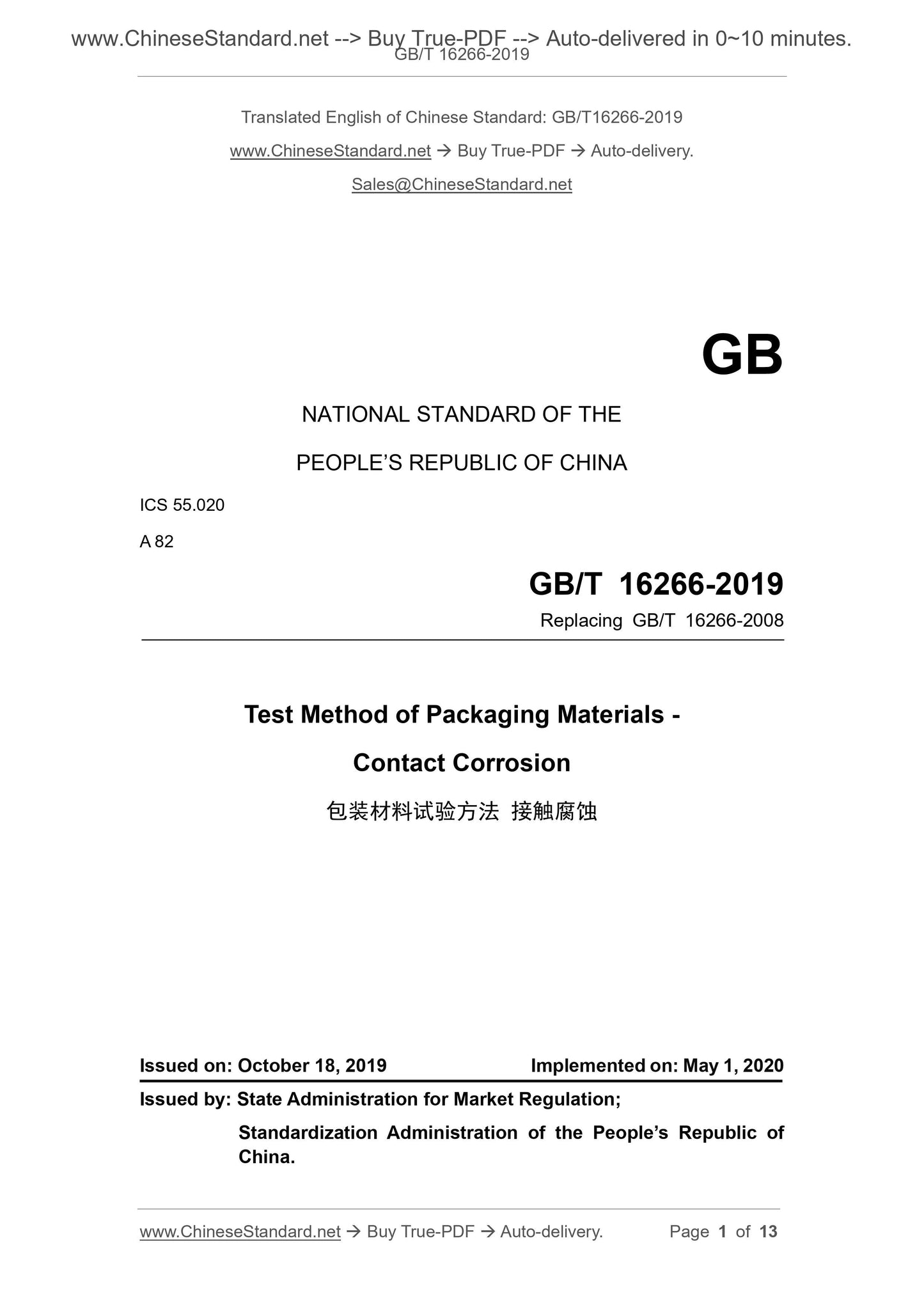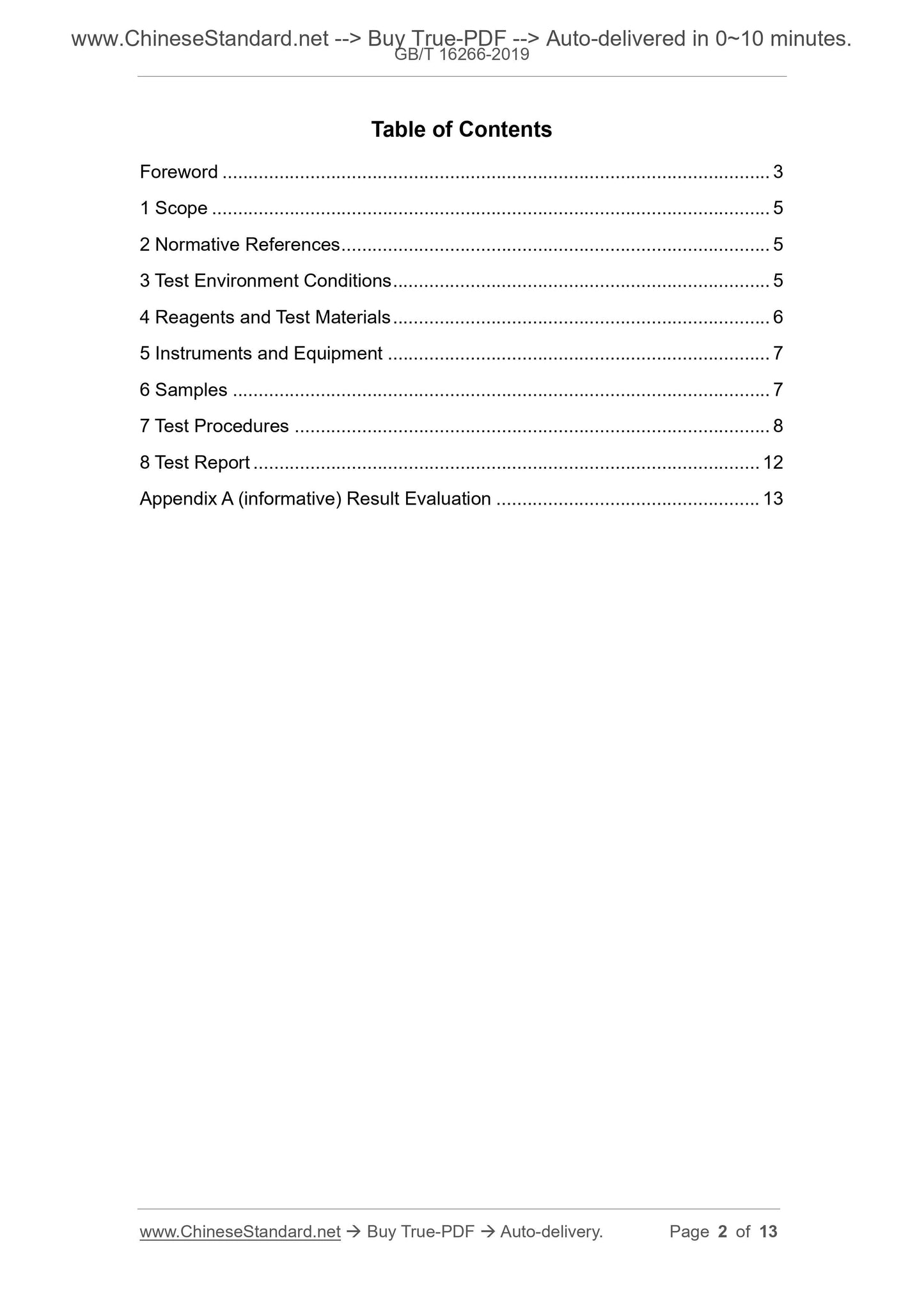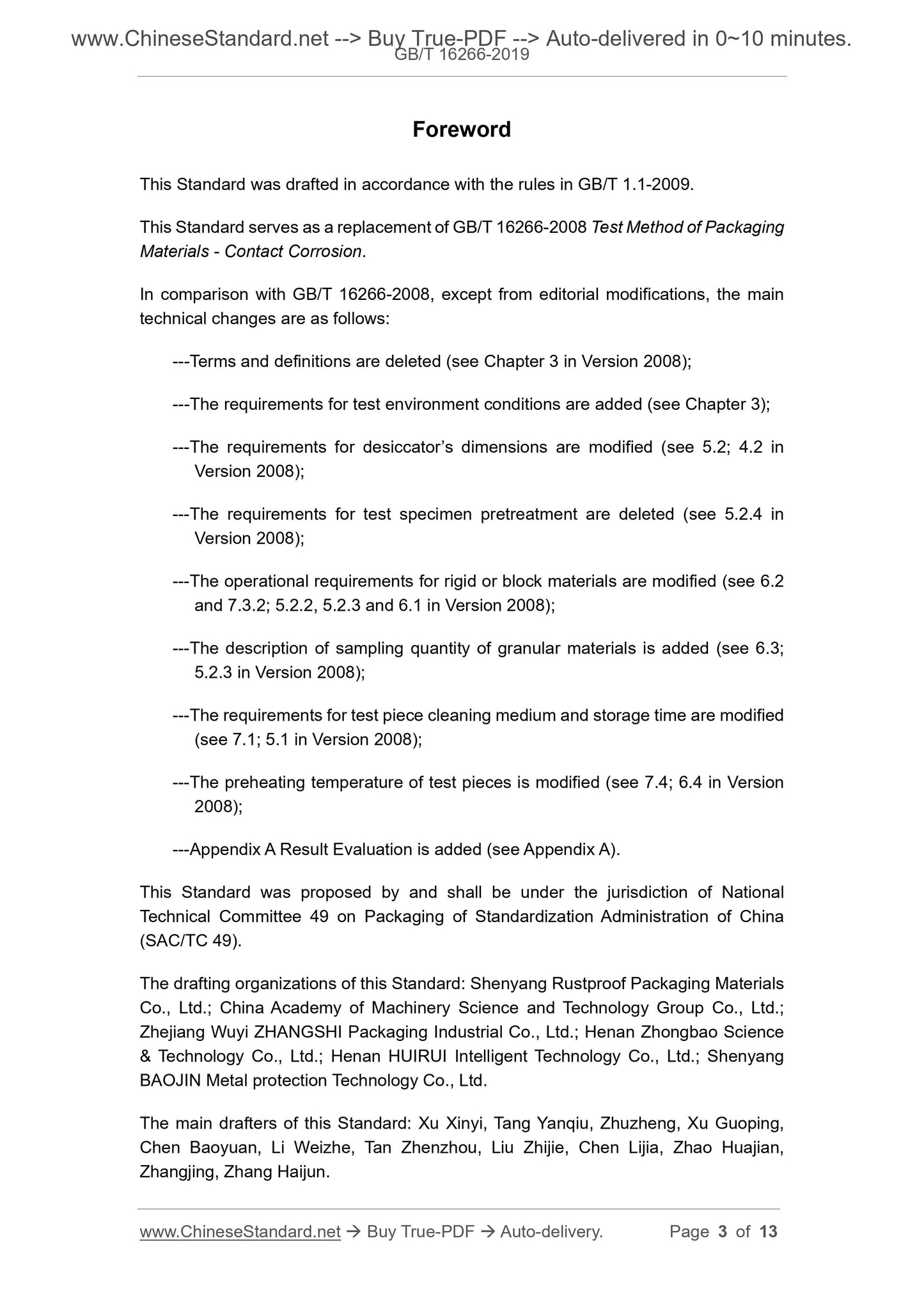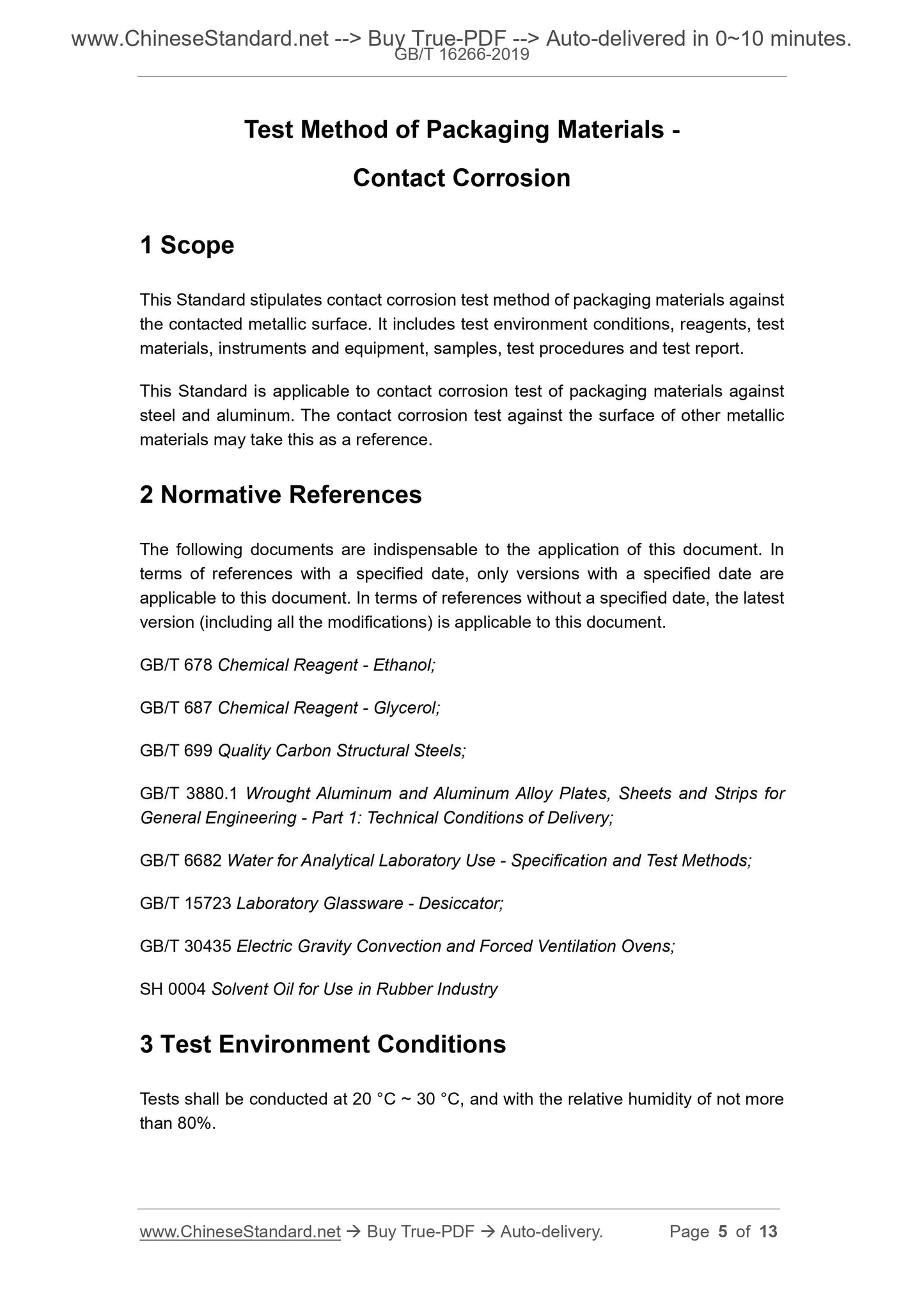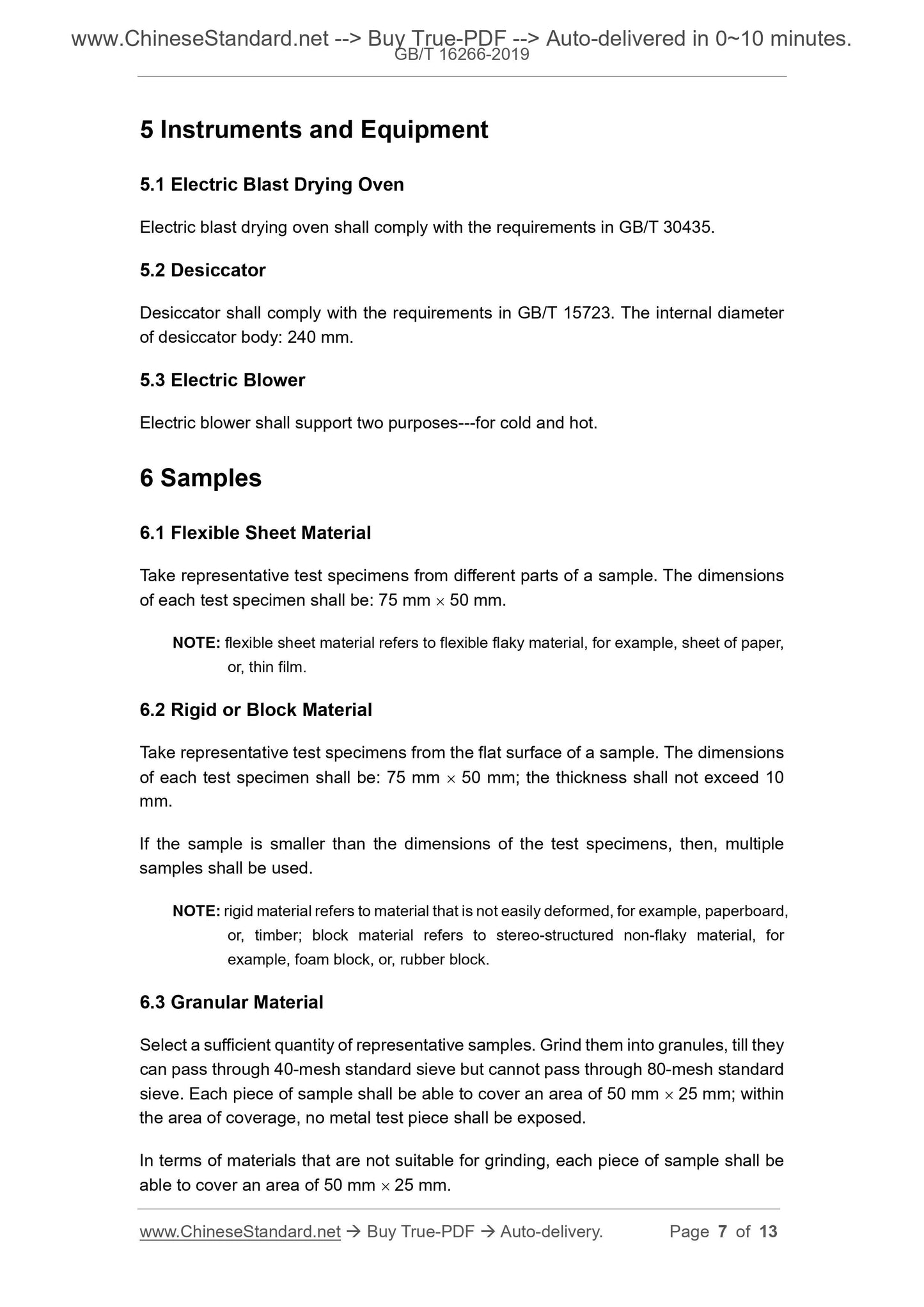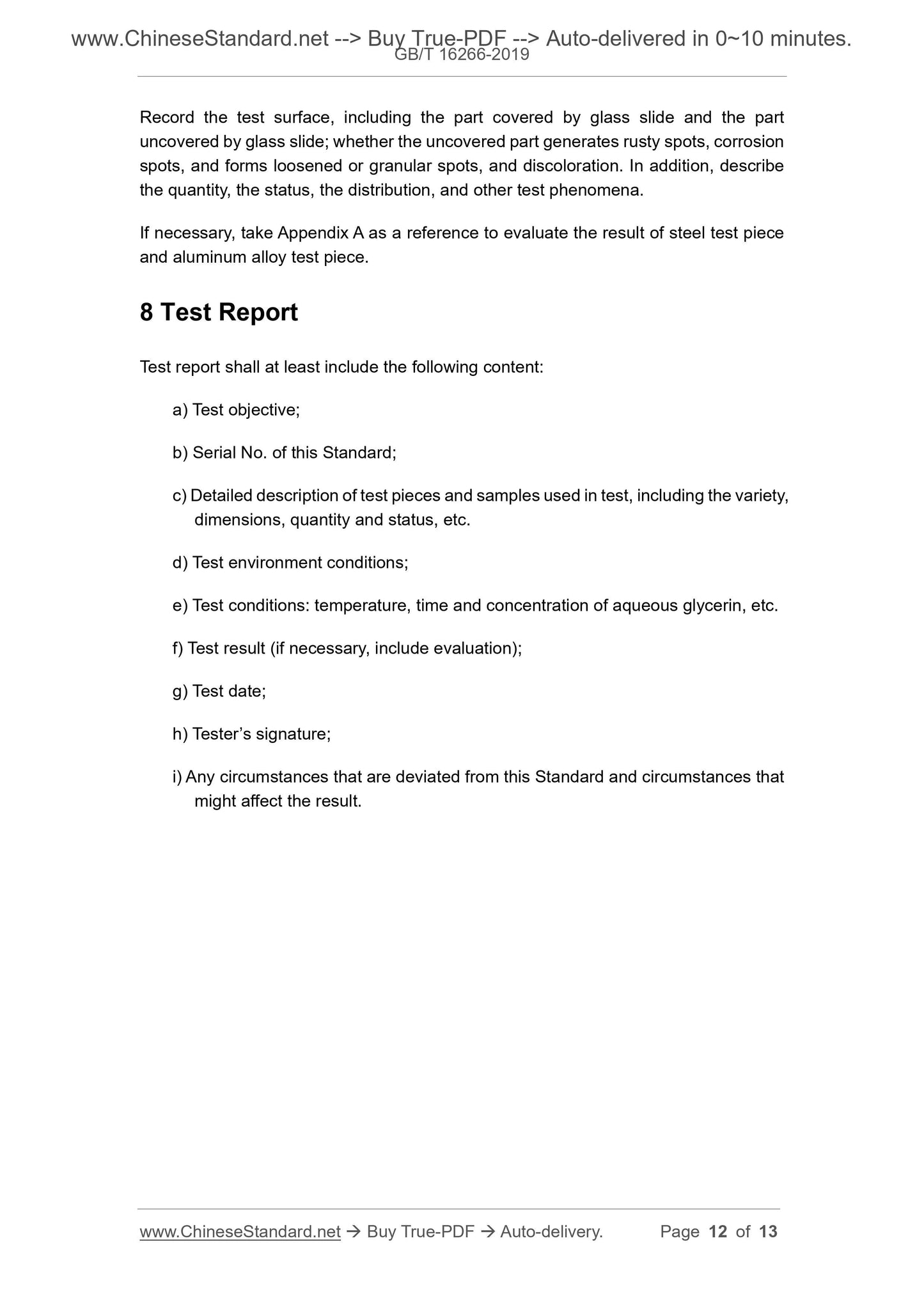1
/
of
6
www.ChineseStandard.us -- Field Test Asia Pte. Ltd.
GB/T 16266-2019 English PDF (GB/T16266-2019)
GB/T 16266-2019 English PDF (GB/T16266-2019)
Regular price
$175.00
Regular price
Sale price
$175.00
Unit price
/
per
Shipping calculated at checkout.
Couldn't load pickup availability
GB/T 16266-2019: Test Method of Packaging Materials - Contact Corrosion
Delivery: 9 seconds. Download (and Email) true-PDF + Invoice.Get Quotation: Click GB/T 16266-2019 (Self-service in 1-minute)
Newer / historical versions: GB/T 16266-2019
Preview True-PDF
Scope
This Standard stipulates contact corrosion test method of packaging materials againstthe contacted metallic surface. It includes test environment conditions, reagents, test
materials, instruments and equipment, samples, test procedures and test report.
This Standard is applicable to contact corrosion test of packaging materials against
steel and aluminum. The contact corrosion test against the surface of other metallic
materials may take this as a reference.
Basic Data
| Standard ID | GB/T 16266-2019 (GB/T16266-2019) |
| Description (Translated English) | Test Method of Packaging Materials - Contact Corrosion |
| Sector / Industry | National Standard (Recommended) |
| Classification of Chinese Standard | A82 |
| Classification of International Standard | 55.020 |
| Word Count Estimation | 10,142 |
| Date of Issue | 2019-10-18 |
| Date of Implementation | 2020-05-01 |
| Issuing agency(ies) | State Administration for Market Regulation, China National Standardization Administration |
Share
